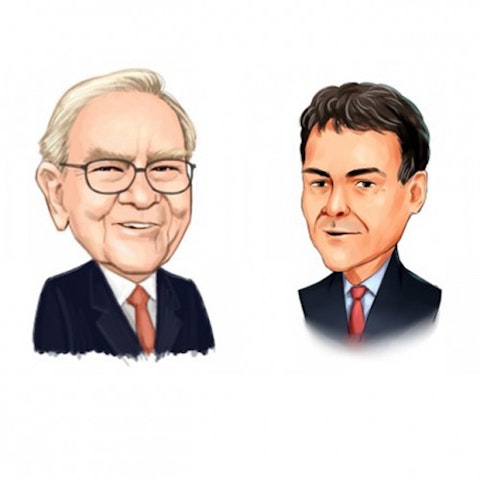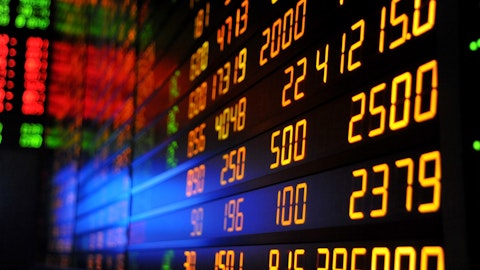Greenlight Capital’s 2018 Q1 investor letter is out. You can download a copy on our site. Following the release of this letter, NY Post said the following in an article titled “Einhorn mystified by Greenlight Capital’s big Q1 loss”:
“It’s the sixth time in the fund’s 22-year history that it has experienced a quarterly loss greater than 5 percent — but the first time the hedgie is not sure why the roughly $7 billion fund is underperforming.”
Financial Times also shares NY Post’s view that Einhorn almost has no clue about why this is happening:
“Seemingly befuddled by the performance, Mr Einhorn struggled to ascribe blame to any fundamental errors or systematic issues in his Q1 letter sent to investors yesterday”
Einhorn isn’t befuddled nor mystified about the performance of his fund, but I am mystified and befuddled by the poor quality of articles written by seasoned hedge fund reporters employed at major news publications.
Einhorn isn’t a newbie value investor who doesn’t understand the fact that the markets can stay irrational for long periods of time. In the newsletter he is trying to tell his investors that he is successful at predicting the actual performance of the portfolio companies and his investment theses are intact. The problem is that the market is still favoring growth stocks over value stocks irrespective of the underlying performance of the companies. Thus, Einhorn is implicitly telling his investors that they should be patient and not give up on value investing. Here is how Einhorn explains the poor performance of his picks:

“We believe our investment theses remain intact. Despite recent results, our portfolio should perform well over time. To some extent, this quarter’s result stems from the continued extreme outperformance of growth over value. The Russell 1000 Pure Growth Index followed a 38% 2017 advance with another 7% climb through the end of March. The Russell 1000 Pure Value Index has declined over 3% year-to-date, retracing most of its 2017 gain of 4%.”
So, it is quite obvious that Einhorn isn’t mystified or befuddled by the poor performance of his value picks. The real issue here is whether Einhorn is delusional about the future prospects of his portfolio picks. Historically value stocks outperformed growth stocks by a meaningful margin. Investors get excited about growth stocks, push prices higher, and then get disappointed when these growth stocks can’t deliver the “expected” operational growth. Before making any predictions about Einhorn’s value stocks picks and short growth stock bets, let’s first take a closer look at the performance of his long picks.
You can find out which stocks Greenlight held at the beginning of the first quarter here on our site. We calculated the first quarter return of each stock and the weighted average return of Greenlight’s 13F portfolio. Assuming that Einhorn hasn’t made significant changes to these portfolio positions and weights during the first quarter, the long side of Greenlight Capital’s portfolio delivered an estimated -4.6% return. Wait, what?
So, Einhorn failed to mention that his long picks lost only about 4.6% which means the bulk of the losses came from the short side of the portfolio. We know that Einhorn is shorting stocks like Amazon.com (AMZN), Netflix (NFLX), athenahealth (ATHN) and Tesla (TSLA) among others. Amazon returned 23.7%, Netflix gained 53.9% and athenahealth delivered a gain of 7.5%, vs. a loss of 14.5% for Tesla. Overall, these stocks had an average return of 17.7%. We don’t know the names of all of Einhorn’s “bubble basket” stocks nor their portfolio weights, but we know that Greenlight Capital was 133% long and 82% short on January 1st. This means the long side of the portfolio accounts for about 6.1 percentage points of the quarter’s 13.6% loss and the short side of the portfolio accounts for the remaining 7 percentage points (we assume 0.5 percentage points of management fees). So, this means Einhorn’s short portfolio lost about 8.5%.
By the way, it took me less than 3 minutes to gather the data and calculate these figures. Actually, Insider Monkey calculates estimated returns for each hedge fund in our database and publish quarterly hedge fund rankings. Our flagship “Best Performing Hedge Funds Strategy” invests in the consensus picks of the top 100 best performing hedge funds every quarter. This strategy gained 4% last quarter, vs. a loss of 1% for the S&P 500 ETF (SPY). Since its inception in May 2014 this strategy’s picks returned 74.4% vs. 49.7% for SPY. I think Greenlight investors would have been happier if they had invested in our flagship strategy. You can see our latest picks by trying our newsletters free of charge for 14 days.
Back to Greenlight’s performance. Einhorn’s losses really stem from his bets against growth stocks such as Amazon.com (AMZN), Netflix (NFLX) and Tesla (TSLA). Amazon is disrupting retailers like JC Penney (JCP), Kohl’s (KSS), DSW Inc (DSW), Carters (CRI), Gap Inc (GPS), Nordstrom (JWN), Best Buy (BBY), Dillard’s (DDS) and Childrens Place (PLCE). Einhorn is betting on all of these retailers probably as part of a “retail basket” strategy. Netflix is disrupting cable companies and content providers like Time Warner Inc (TWX) which Einhorn is betting on. Tesla is disrupting traditional car manufacturers like General Motors (GM). Einhorn has $1 billion riding on GM’s stock.





